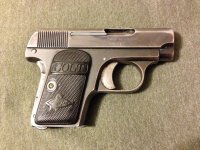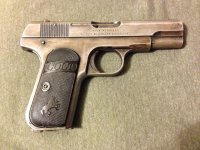I am looking at buying an early Hand Ejector Model 1899 in the 15K serial number range. There is no bluing. The gun has an even nice brown patina instead. No pitting or evidence of oxidation on the gun at all. It is mechanically sound and the grips are very good.
My question is where would such a gun fall in the condition scale?
Is a really nice brown patina a detractor to value? If so, at what % roughly would you take off from the value? 10% 20% etc. etc. ??
thanks for the input.
My question is where would such a gun fall in the condition scale?
Is a really nice brown patina a detractor to value? If so, at what % roughly would you take off from the value? 10% 20% etc. etc. ??
thanks for the input.


